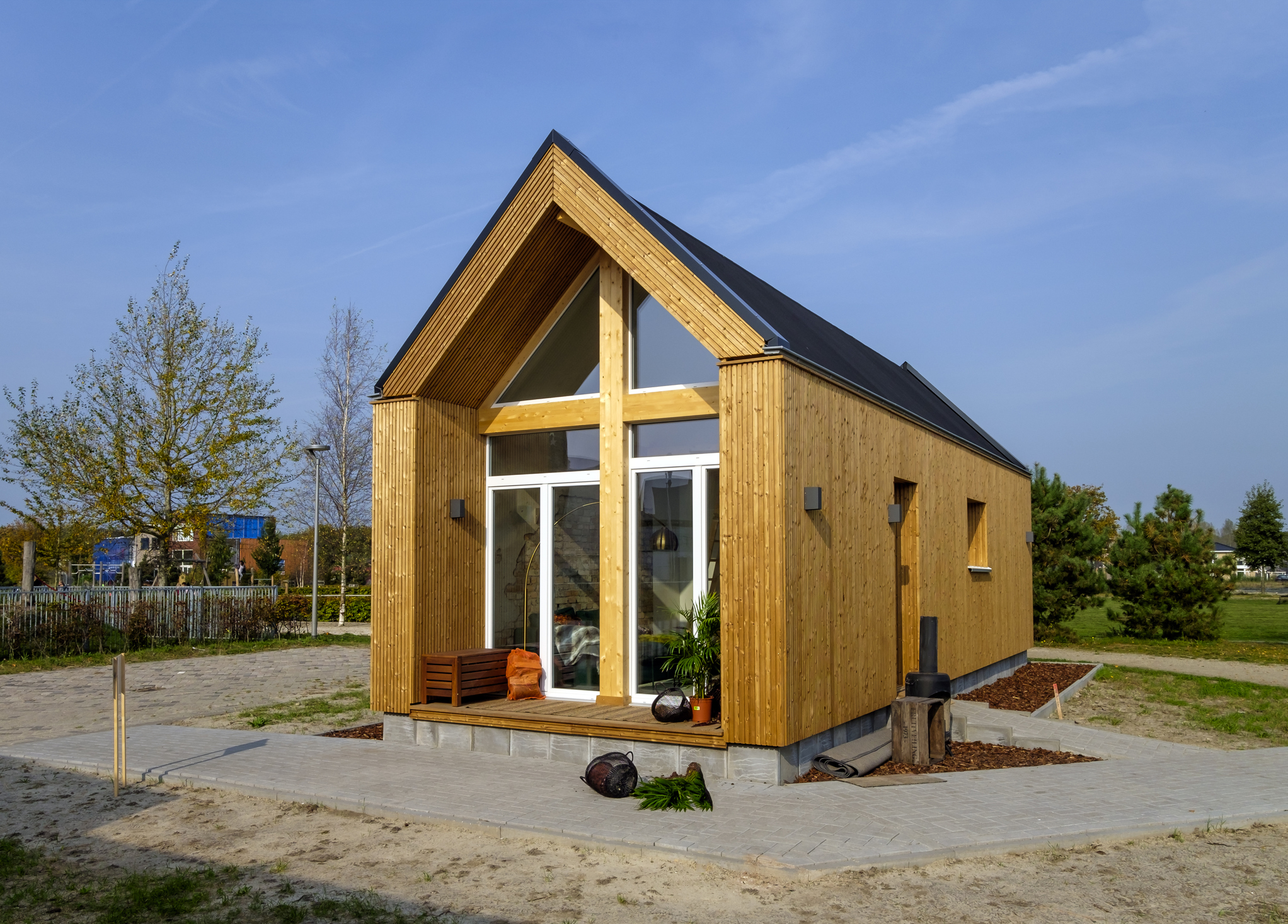
It’s not unusual for people to downsize when they get older. However, these days, it’s not just empty nesters and retirees who are downsizing. Searches for tiny houses have increased 680% over the past 10 years, and Accessory Dwelling Units (ADUs) are growing at a rate of 9% per year.
Homeowners and would-be homeowners of all ages are seeing the advantages of tiny homes and ADUs. In a recent study, we found that the most appealing things about building a tiny home are the affordability, efficiency, and eco-friendliness they provide.
But is it worth it, and what are people looking for in tiny homes and ADUs? HomeAdvisor surveyed 1,800 people to find out their attitudes toward small homes: whether they’d live in them or buy them, what attracts them to the idea, and the concerns they have.
Key Takeaways
- More than eight in 10 believe that ADUs should be allowed in their neighborhood, but one in three say they should be limited to 720 square feet or less in a high-density area.
- Nearly nine in 10 said they would live in a tiny house, and 31% would buy one.
- Of those who would buy a tiny house, 68% said they would consider buying one as their first home.
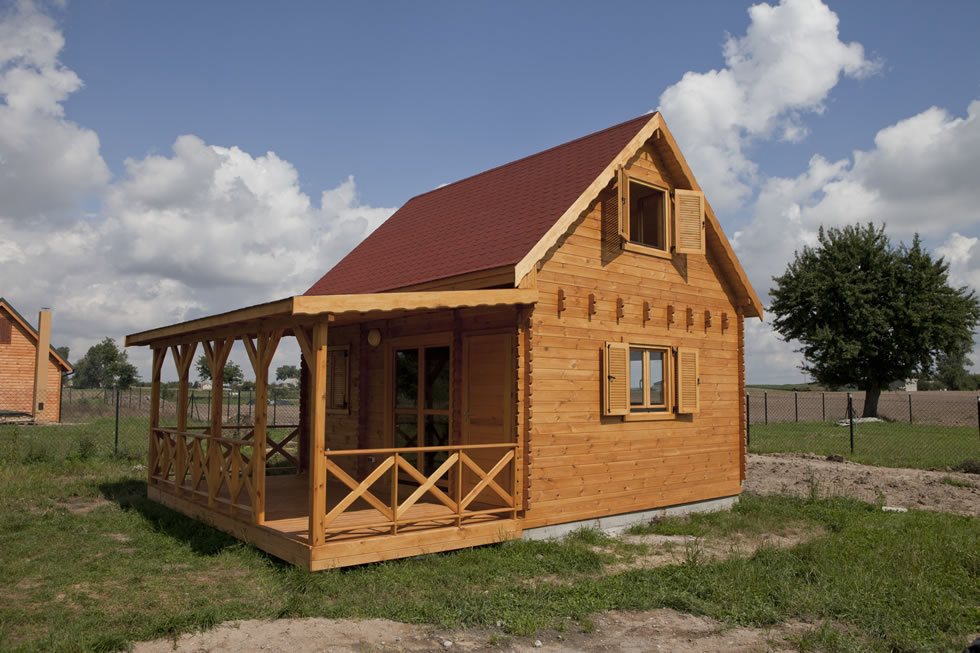
How Do Americans Feel About ADUs?
Sometimes known as "granny flats" or "in-law apartments," ADUs can take many forms. Some are detached, some are converted garages, and some are in remodeled basements or attics.
Detached ADUs are freestanding structures such as cottages, carriage houses, or backyard apartments. In this instance, contractors would get requests to build new outbuildings locally.
Attached ADUs, meanwhile, share one wall with the primary residence, but don’t have a private entry (with contractors building home additions in some cases). Then there are converted spaces within the single-family home: garages that have been converted into apartment spaces, or fully functional apartments, often in a basement or attic, that include a private entry.
Despite some controversy from neighbors over things like privacy and development fees, as well as somewhat complex zoning laws, a majority of respondents (84%) said they should be allowed in their neighborhood.
However, there are caveats: One in three say these structures should be 720 square feet or less in a high-density area. There are also concerns over things such as overcrowding, the potential for lower property values, and the fact that ADUs can change the appearance of a neighborhood. Other respondents suggested ADU newcomers could compete for limited parking space with established residents or might not hook up well to existing electricity infrastructure.
Still, more than three in four respondents (78%) said they’d put one on their property, and more than half (54%) would give up backyard space to build one. They cited several reasons, such as providing adult children with their own space and enabling older family members to stay nearby as they age.
Others had a different motive in mind: creating an extra income stream. A total of 78% said they would install an ADU as a rental—58% as a long-term rental and 20% as a short-term rental.
Would Americans Live in an ADU?
Sure, they’d put one on their property, but how many Americans would actually live in an ADU? A significant majority, it turns out. More than eight in 10 said they would, which is a proportion that holds fairly steady across the generations. Generation Z respondents were most apt to live in one at 85%, but millennials and Gen Xers were nearly as likely at 83% and 78% of baby boomers.
The most desired type of ADU was a detached model, which was favored by 58% of survey participants. Nearly half of respondents (49%) said they would need one bedroom, and 59% said they’d want one bathroom. And when it comes to size, 36% said they would need 500 to 699 square feet.
How long would they stay there? Would an ADU wear out its welcome? The answers varied, with 20% saying they would only live in an ADU for one to three years, while 17% said they’d live there for 10 or more years. Of course, an ADU can only accommodate so many people. Still, 33% said they’d be willing to live with two other people, while 27% would be willing to live with one other person.
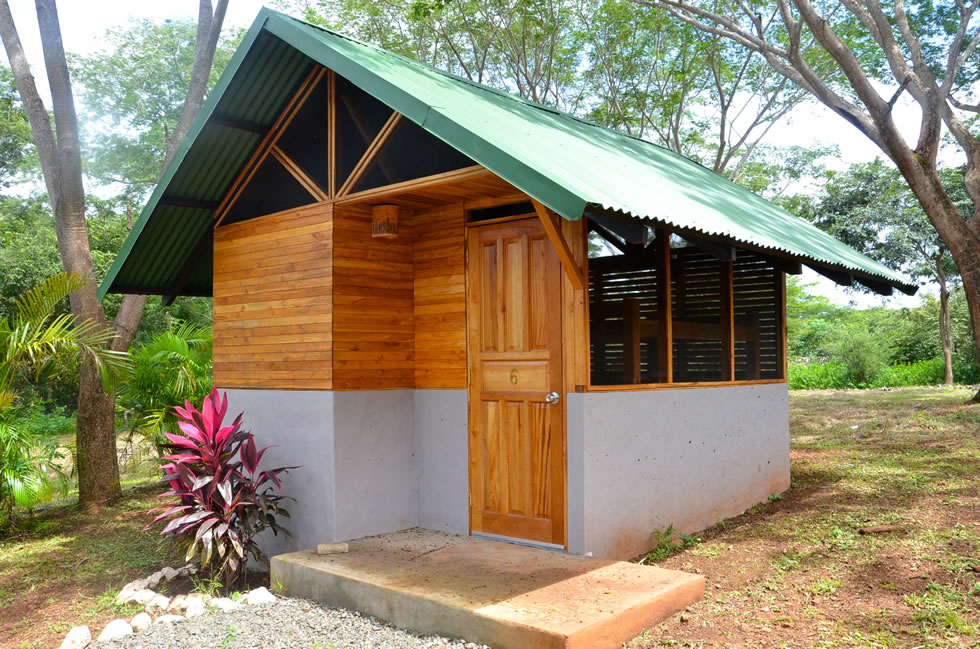
How Americans Feel About Tiny Homes
Tiny homes and ADUs are both small, but the main difference between them is their location. Whereas ADUs function as auxiliary units (hence their names) sharing land with the main residence, tiny homes can stand alone on their own piece of property.
While there’s no official definition of what constitutes a tiny home, they’re typically less than 600 square feet in size and most often built on trailers. This size is so owners can move them easily and, just as importantly, means they don’t fall under local building codes that stipulate a minimum square footage. They can come in several forms, including a tiny cabin, small mobile home, bus conversion, or even a shipping container.
Nearly eight in 10 would put a tiny home on their property, most often for extra income. In fact, 81% would invest in one as a rental property—60% for the long term, and 21% for the short term. In addition, one in four said they would use it as a home office.
As with ADUs, however, zoning can be tricky. Still, 87% of respondents said residents should be required to get approval before building.
Would Americans Actually Live in a Tiny home?
The answer is, overwhelmingly, yes. The vast majority of respondents (86%) said they would be willing to do so. The largest number (48%) said they would like one on a permanent foundation, with 22% saying they’d prefer one on a trailer for mobility.
As with ADUs, respondents across all generations we surveyed expressed a willingness to live in a tiny home. Gen Zers were most likely to say they would live in a tiny home, at 89%, followed by millennials and Gen Xers at 86%, then baby boomers at 81%. And more than half would live in a tiny home year-round.
The majority said they would need one bedroom and one bathroom (55% and 64%, respectively), while three in four said they’d live with two or fewer people, with their significant other being the most ideal roommate.
They listed the most appealing aspects of tiny home living as affordability, efficiency, eco-friendliness, a minimalist lifestyle, and a downsized lifestyle.
When it came to the most popular places for tiny homes, they named a plot of land they own, a dedicated tiny home community, and their yard.
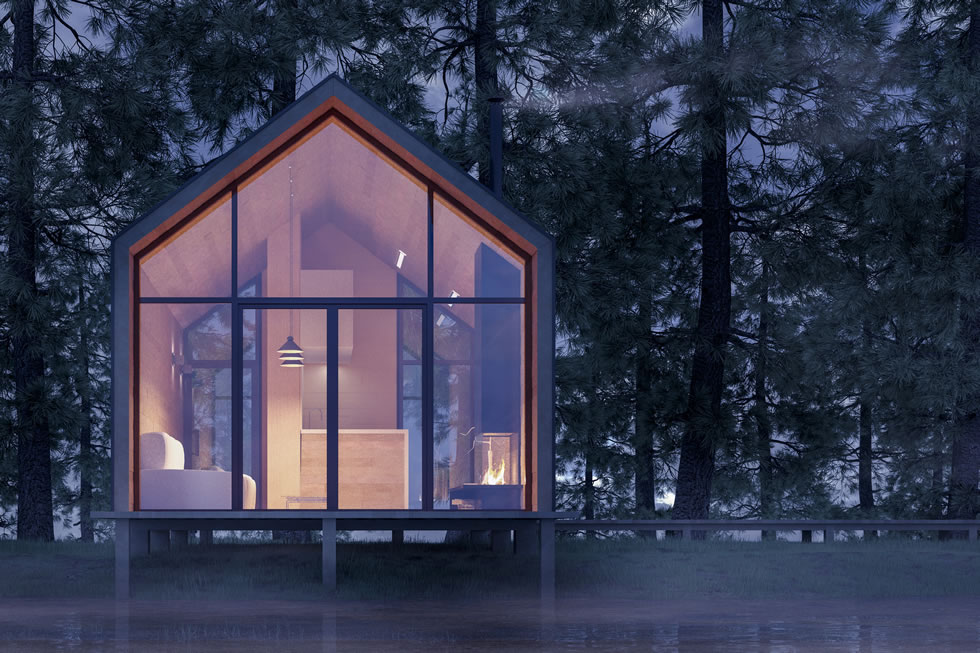
How Likely Are Americans to Buy a Tiny Home?
Even though they’re open to living in a tiny home, that doesn’t mean our survey respondents are likely to buy one. Fewer than one in three said they would purchase one, although, of those who would, 68% said they would buy one as their first home.
Affordability was the most appealing reason to buy a tiny home. Tiny homes cost less than typical homes, even though they have a higher price per square foot: $150 per square foot on average and, in some cases, as much as $400 per square foot. That compares to $100 to $200 per square foot for typical homes.
Ready-made tiny houses cost an average of $45,000, but prices can range from $8,000 to more than $150,000. Nearly seven in 10 (69%) said they’d pay as much as $60,000 for a move-in-ready tiny home, but that isn’t the only option available. Those looking to build their own tiny house can expect to pay anywhere between $14,000 to nearly $55,000 for the materials alone, not counting building permits, floor plans, and other costs.
Of those who would rather buy than rent, 63% would like to keep a budget under $60,000, but just over one in 10 would spend more than $100,000 for a tiny home.
But money wasn’t the only factor. Others are drawn to the efficiency (46%) and the minimalist lifestyle (46%) offered by a tiny home.
Of those who said they’d buy rather than rent, a majority (56%) said they would put the home on a piece of land they own; their backyard was the next most popular choice (18%), followed by a dedicated tiny home community. And they’d be in it for the long haul: a majority would plan to live in the home year-round (66%) for 10 years or longer (38%).
Americans Are More Likely to Rent a Tiny House Than Buy One
A majority of respondents would rather rent a tiny house than commit to one by buying it, with half (50%) preferring a short-term rental and 19% willing to stay for the long term.
Renters are less likely to live in a tiny house year-round than buyers: 44% say they would live year-round, with 38% staying just one to three months and 15% for three to six months.
They’re also far less likely to stay put than buyers. Fewer than one in 10 said they would live in a tiny house for 10 years or longer compared to the nearly seven in 10 of those who would buy. Just one in four said they would stay in a tiny home for a year or longer.
When it comes to location, most would prefer to stay in a tiny home on a plot of land they own (34%), but 27% would rather rent one in a tiny home community. As with those who would buy, affordability is a key factor, which is no surprise considering that most tiny homes typically rent for $500 to $1,000 a month when parked in an RV park.
Eco-friendliness, efficiency, and a minimalist lifestyle were also major draws for renters.
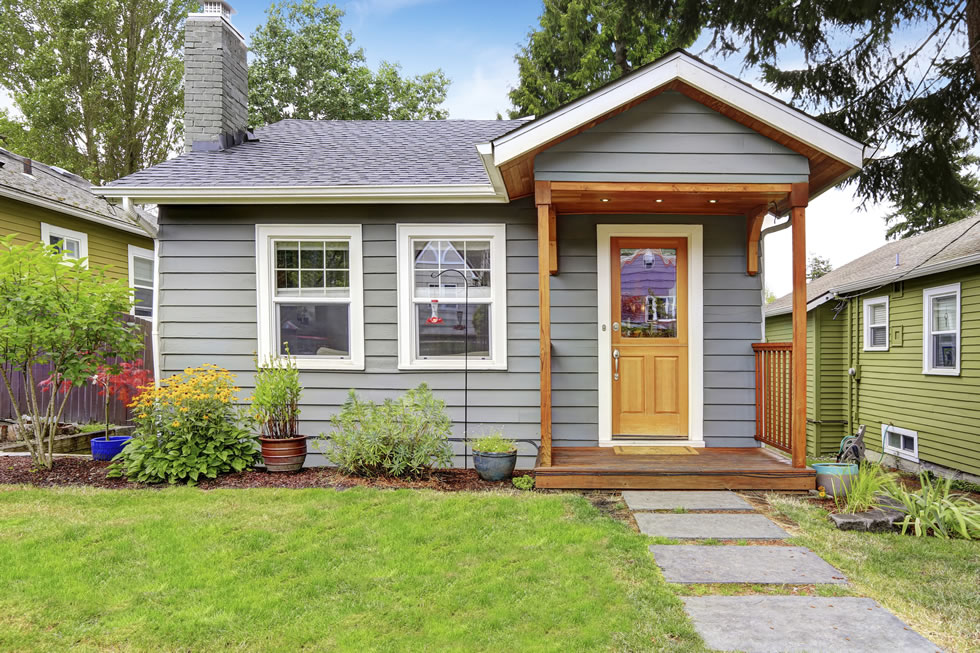
The Best Places in America for Tiny Homes
Our recent study about off-the-grid capitals of America examined Instagram photos and found the largest number of tiny homes (695) in Portland, OR, with Austin, TX, Los Angeles, New York City, and Seattle also among the top 10.
Among states, California ranked first, with six of the top 10 either along the West Coast or in the Rocky Mountain states. The Golden State was followed by Florida, Colorado, Texas, and Oregon in the top five. Rounding out the top 10, in order, were Washington State, Arizona, North Carolina, New York, and Utah.
As you can see, Americans are not only buying tiny houses and ADUs in larger numbers; they’re also open to continuing the trend. Rising home prices that make traditional single-family homes less affordable are certainly one factor, and rising energy costs are another. Downsizing and a desire to live a greener life with a smaller carbon footprint also play a role.
How Americans Really Feel About ADUs and Tiny Homes. See full Study and Survey Data here: www.homeadvisor.com/r/how-americans-feel-about-adus
